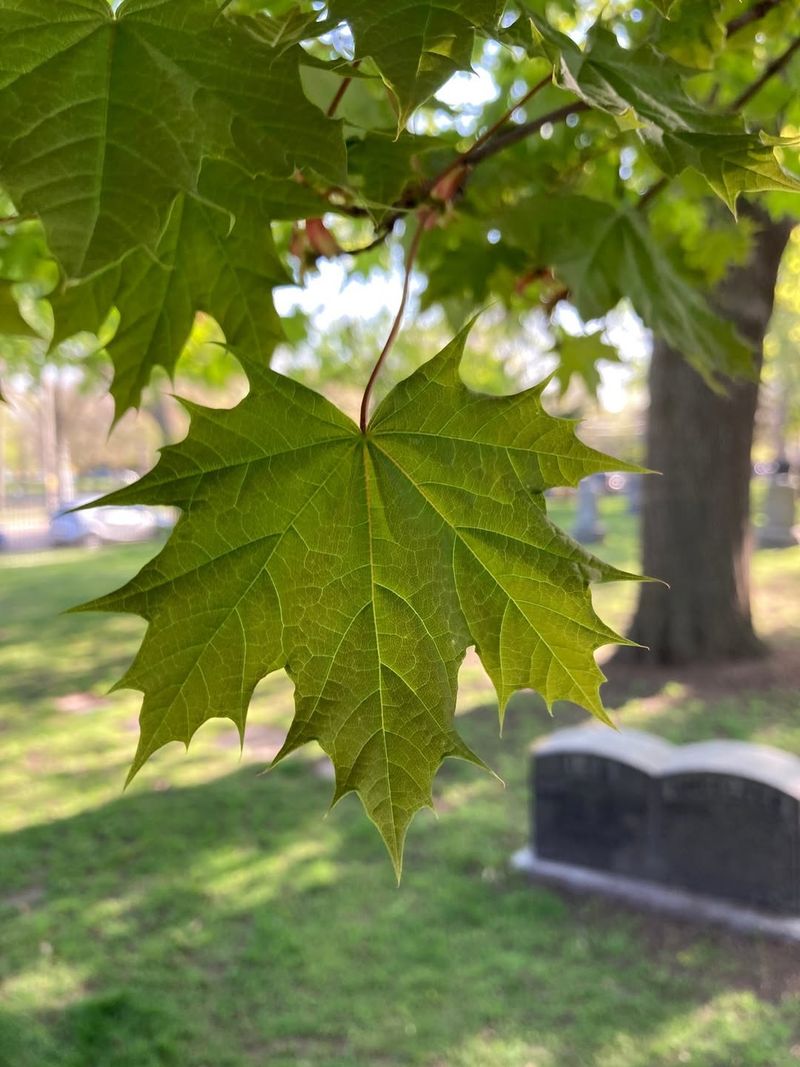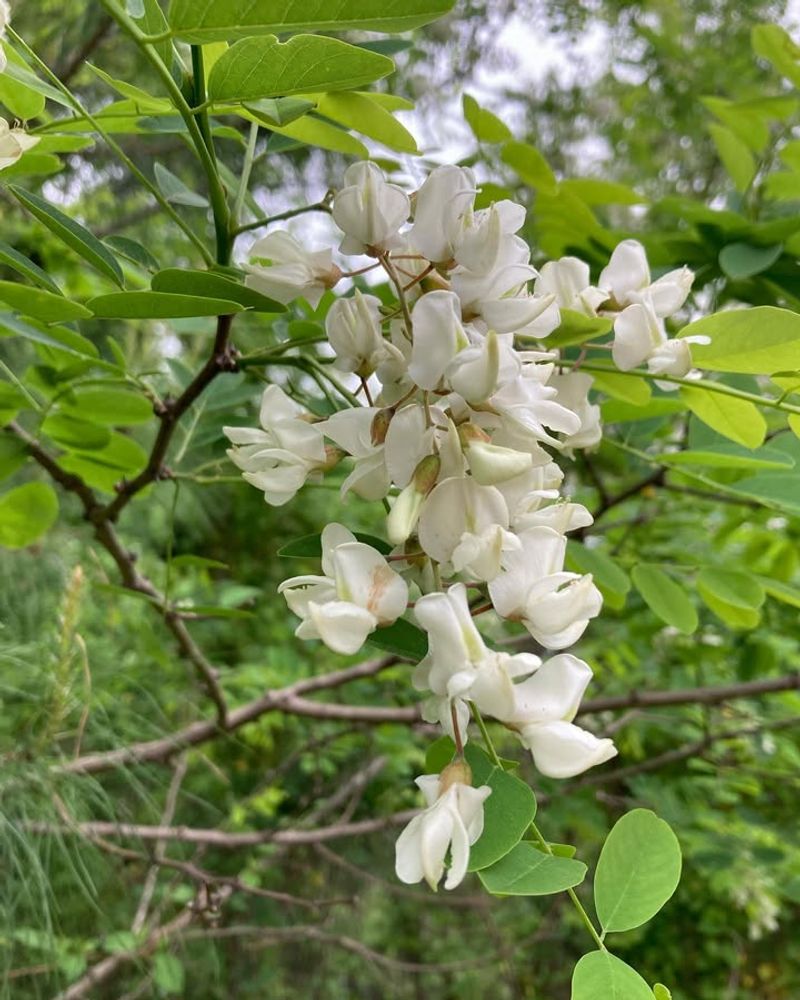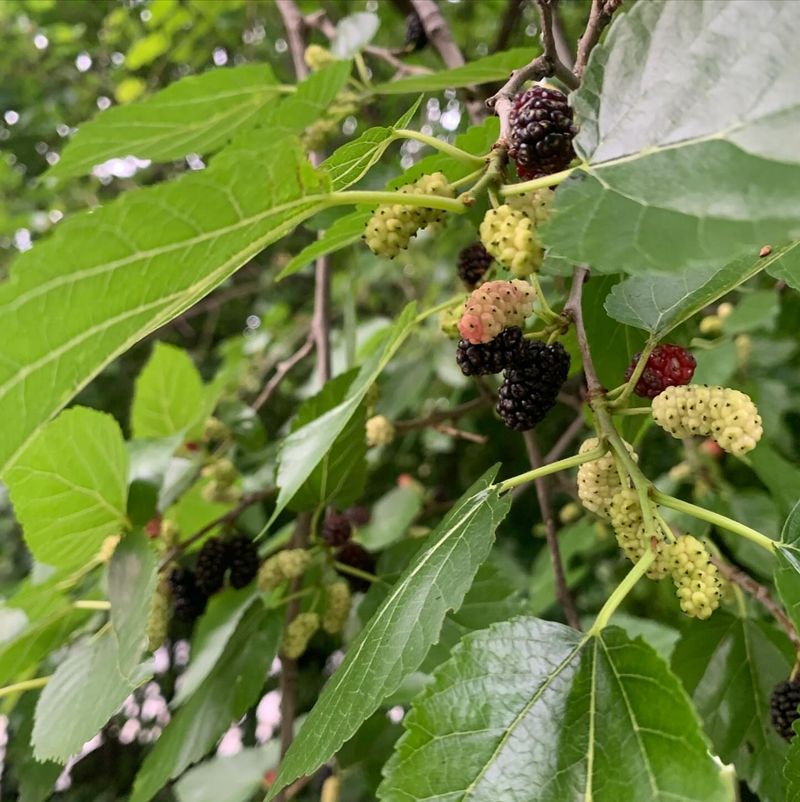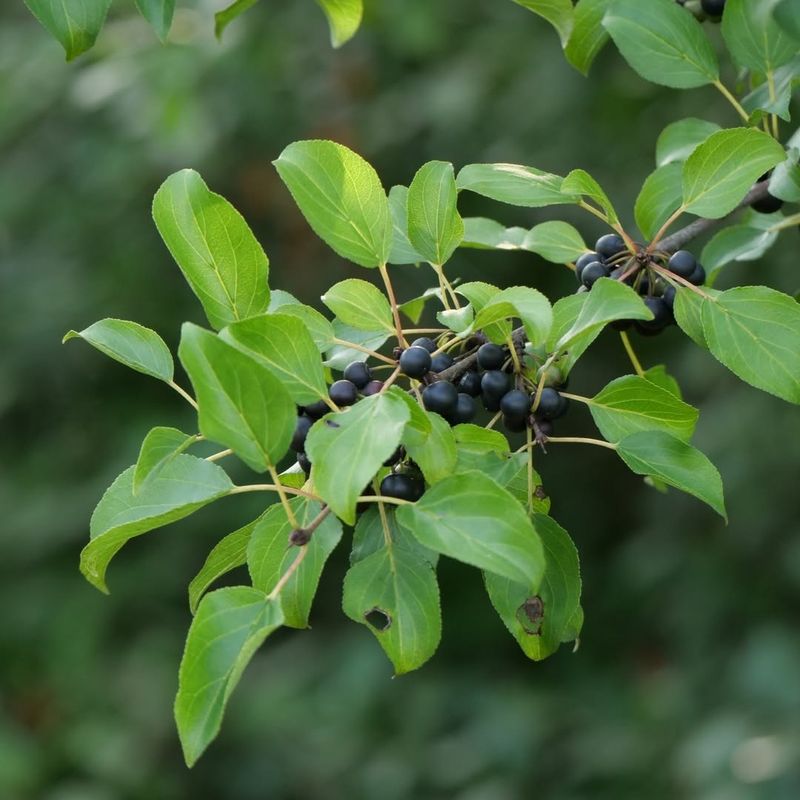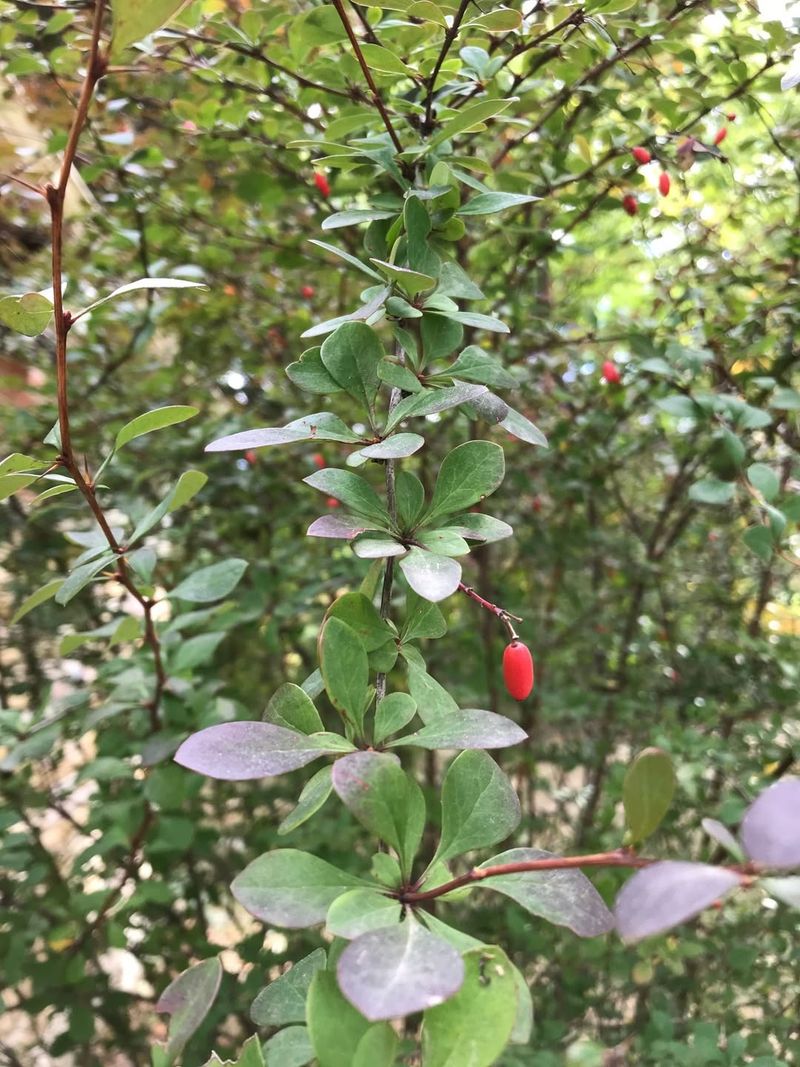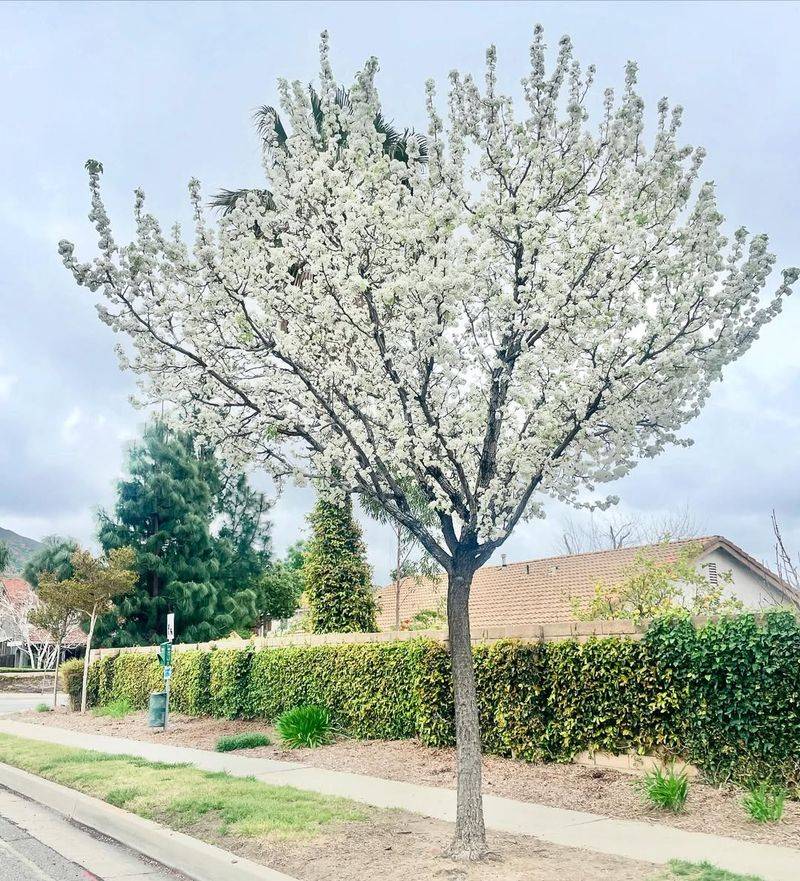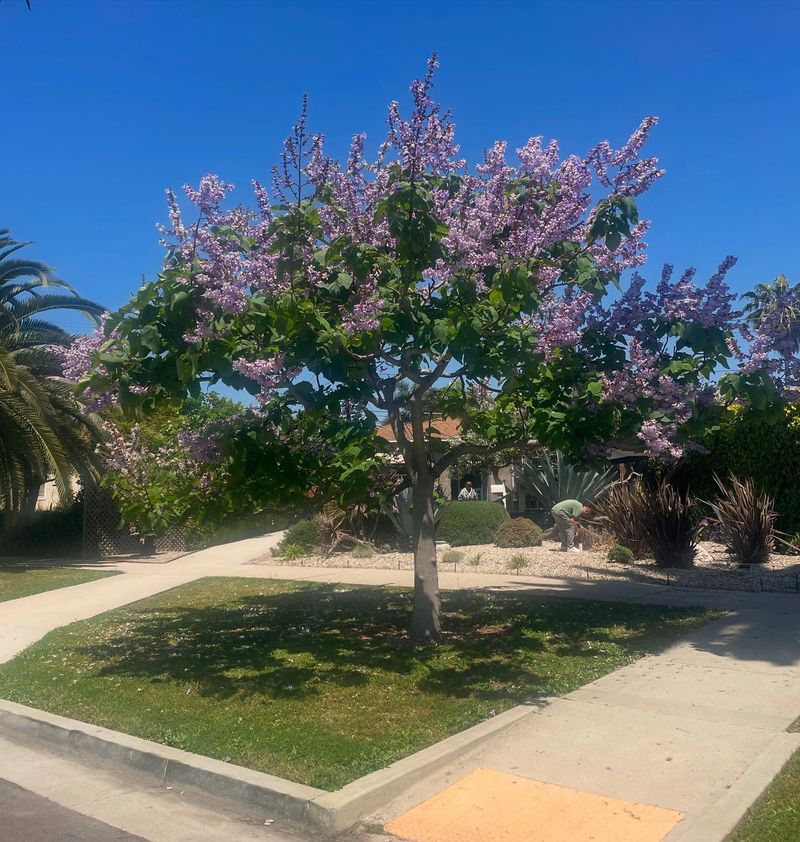Owning property in New York comes with responsibilities that many homeowners don’t realize until it’s too late.
Some trees might seem harmless, but certain species are actually illegal to keep on your land because they damage ecosystems, spread diseases, or threaten native plants. Ignoring removal orders can lead to hefty fines and legal trouble.
1. Tree Of Heaven
Originally from China, this fast-growing invader earned its heavenly name but causes hellish problems for New York ecosystems. Its aggressive root system damages sidewalks, foundations, and underground pipes while releasing chemicals that poison surrounding plants.
State regulations require property owners to remove it promptly when discovered. The tree spreads rapidly through root sprouts and millions of wind-dispersed seeds.
Failure to comply with removal notices can result in fines starting at several hundred dollars and increasing with continued non-compliance.
2. Norway Maple
Dense shade from this European import creates barren ground beneath its canopy where native wildflowers once thrived. What looks like a beautiful street tree actually outcompetes sugar maples and other native species for resources and space.
Many New York municipalities have banned planting new Norway maples and require removal in sensitive ecological areas. The tree produces abundant helicopter seeds that spread aggressively into forests and parks.
Property owners ignoring municipal removal orders face escalating fines and potential legal action.
3. Black Locust
Sharp thorns covering its branches make this tree dangerous for children and pets, but that’s not why officials want it gone. Black locust forms dense thickets through aggressive root suckering, crowding out native vegetation and altering soil chemistry through nitrogen fixation.
While native to parts of the Appalachians, it’s considered invasive in New York ecosystems. Municipal codes in various counties mandate removal when it spreads beyond controlled areas.
Homeowners can face fines for allowing unchecked spread onto neighboring properties or public lands.
4. White Mulberry
Brought from Asia centuries ago to support silk production, this tree now threatens native red mulberry populations through hybridization. White mulberry spreads easily through bird-dispersed seeds and tolerates poor urban conditions better than most natives.
Environmental protection agencies classify it as invasive in New York, particularly in natural areas and forest edges. Local ordinances may require removal when trees appear on properties adjacent to protected lands.
Ignoring removal requirements can lead to fines and mandatory professional removal at owner expense.
5. Common Buckthorn
European settlers introduced this hedgerow plant without realizing its destructive potential. Common buckthorn’s berries work as a laxative for birds, causing them to spread seeds rapidly across wide areas while the tree’s dense growth shades out native understory plants.
It alters soil chemistry and provides poor habitat value compared to native alternatives. New York classifies it as a regulated invasive requiring removal in many jurisdictions.
Municipalities can impose fines on property owners who fail to eliminate buckthorn infestations within specified timeframes.
6. Japanese Barberry
Landscapers once loved this thorny shrub for its colorful foliage and deer resistance, but research revealed darker consequences. Japanese barberry creates ideal microhabitats for blacklegged ticks, dramatically increasing Lyme disease risk in infested areas.
Its dense growth excludes native plants and alters forest floor ecology. New York has restricted sales and mandates removal in certain areas due to health and environmental concerns.
Homeowners keeping barberry near protected lands or ignoring municipal removal orders face fines and required professional remediation at their own cost.
7. Winged Euonymus
Brilliant red fall color made burning bush a landscaping favorite for decades before its invasive nature became apparent. Winged euonymus escapes cultivation easily, spreading through bird-dispersed seeds into forests where it forms dense understory thickets.
Native wildflowers and tree seedlings cannot compete with its aggressive growth. Several New York counties now prohibit planting and require removal from properties adjacent to natural areas.
Homeowners who planted burning bush years ago may now face mandatory removal orders and fines if they don’t comply with local invasive species ordinances.
8. Callery Pear
Those beautiful white spring blossoms hide a destructive reality that has led to bans across multiple states. Callery pear, including Bradford pear cultivars, produces thorny thickets that invade fields, roadsides, and forest edges throughout New York.
Different cultivars cross-pollinate to create fertile offspring that spread aggressively. Weak branch structure causes frequent storm damage, creating additional hazards.
Many municipalities now require removal of callery pears, especially near conservation lands, with fines imposed on property owners who ignore removal notices and deadlines for compliance.
9. Princess Tree
Stunning purple blooms and rapid growth made this Asian import popular for quick shade, but its invasiveness now outweighs aesthetic appeal. Princess tree produces millions of tiny seeds per year that spread on wind currents, allowing it to colonize disturbed areas and forest gaps.
Its fast growth can damage structures and utilities. New York classifies it as invasive in several regions, particularly where it threatens native forest regeneration.
Property owners may face removal requirements and fines when princess trees appear on their land near protected natural areas or conservation zones.



